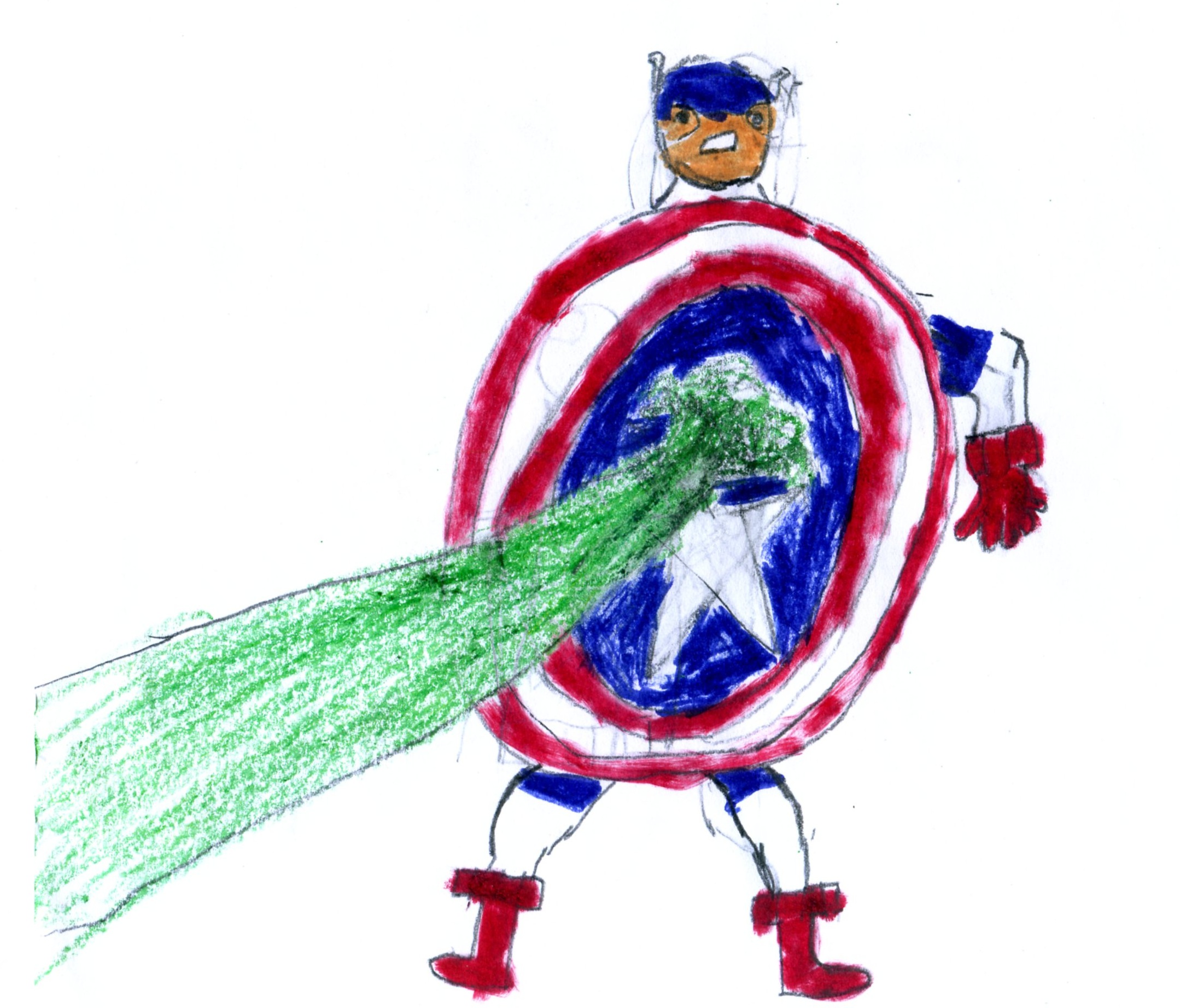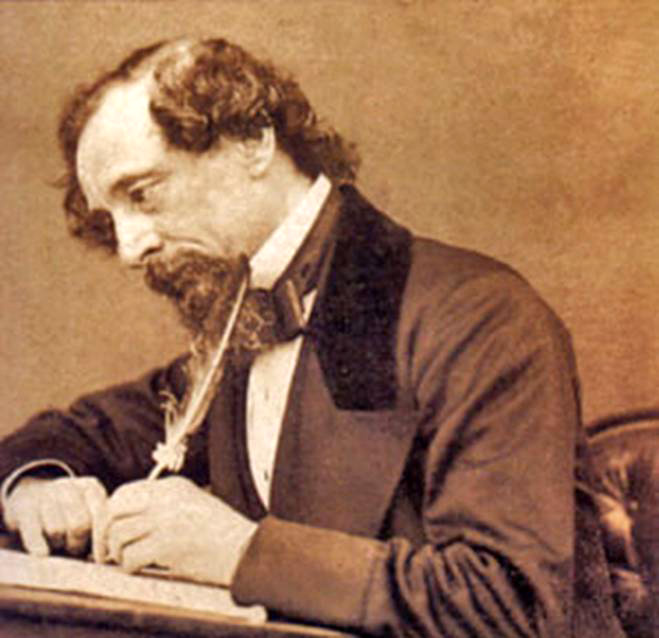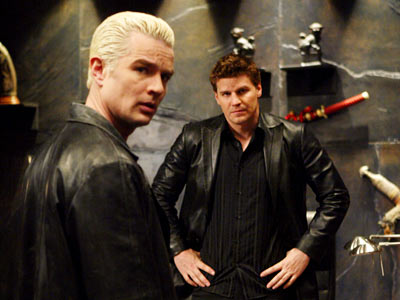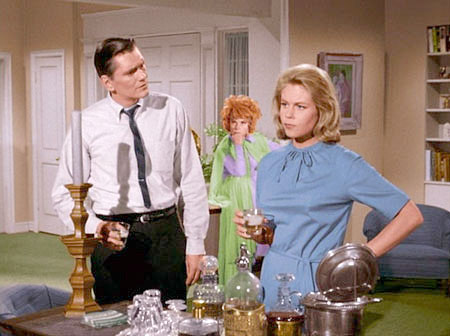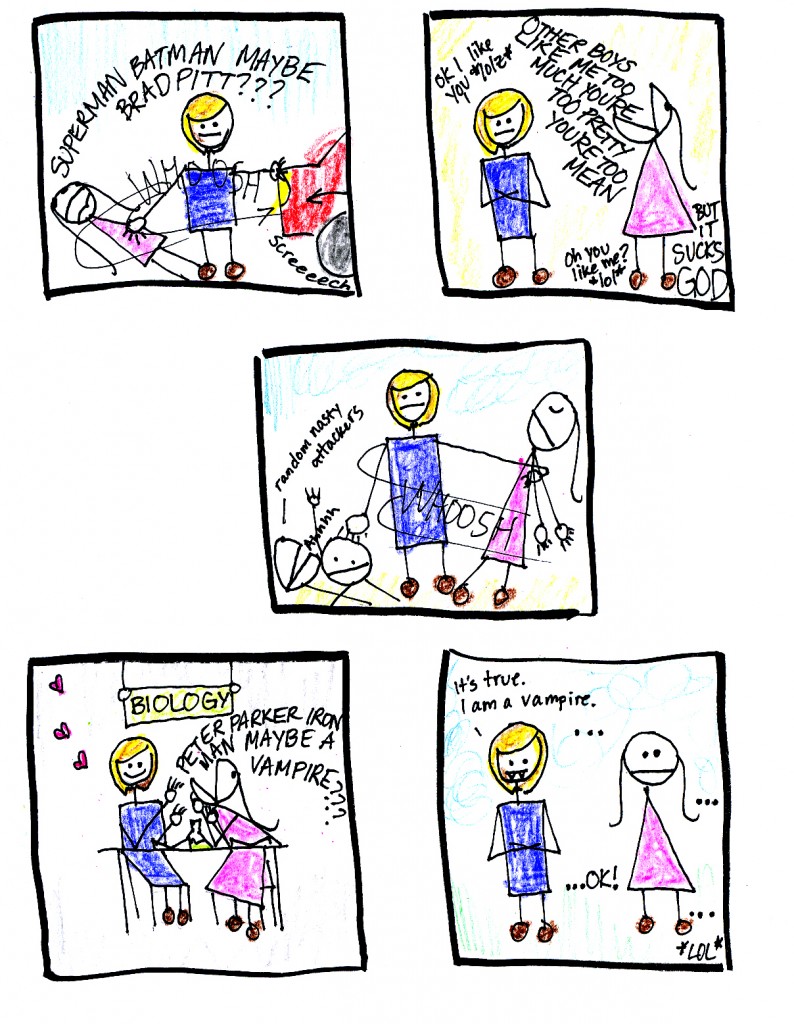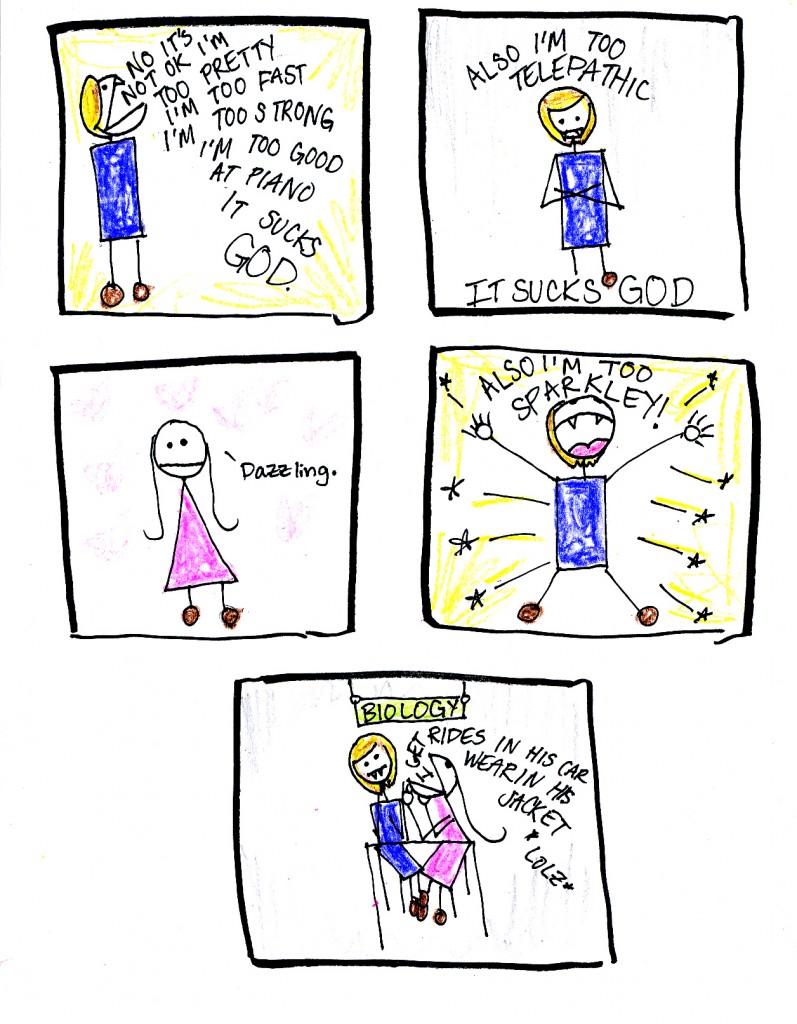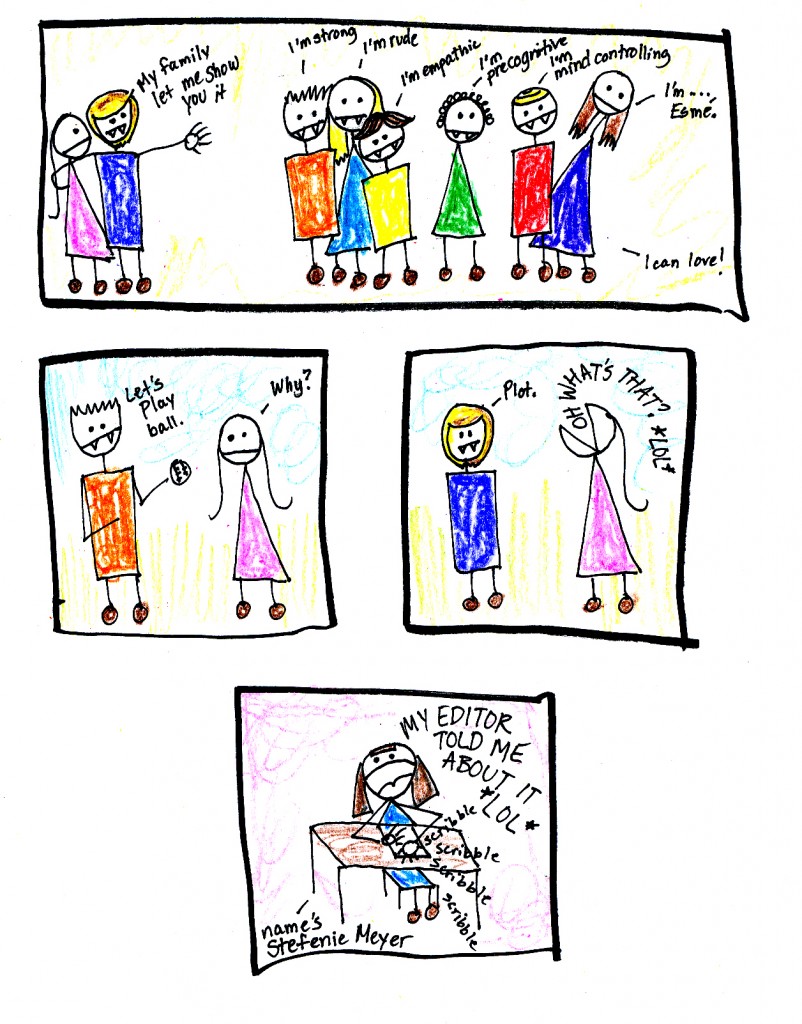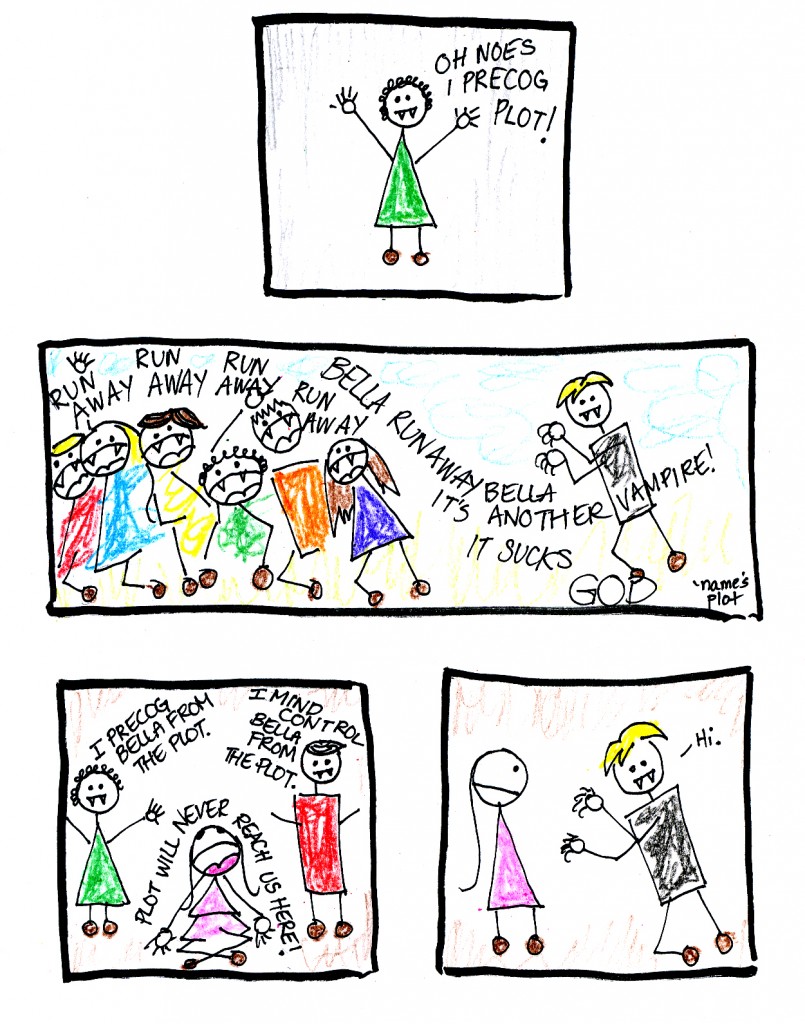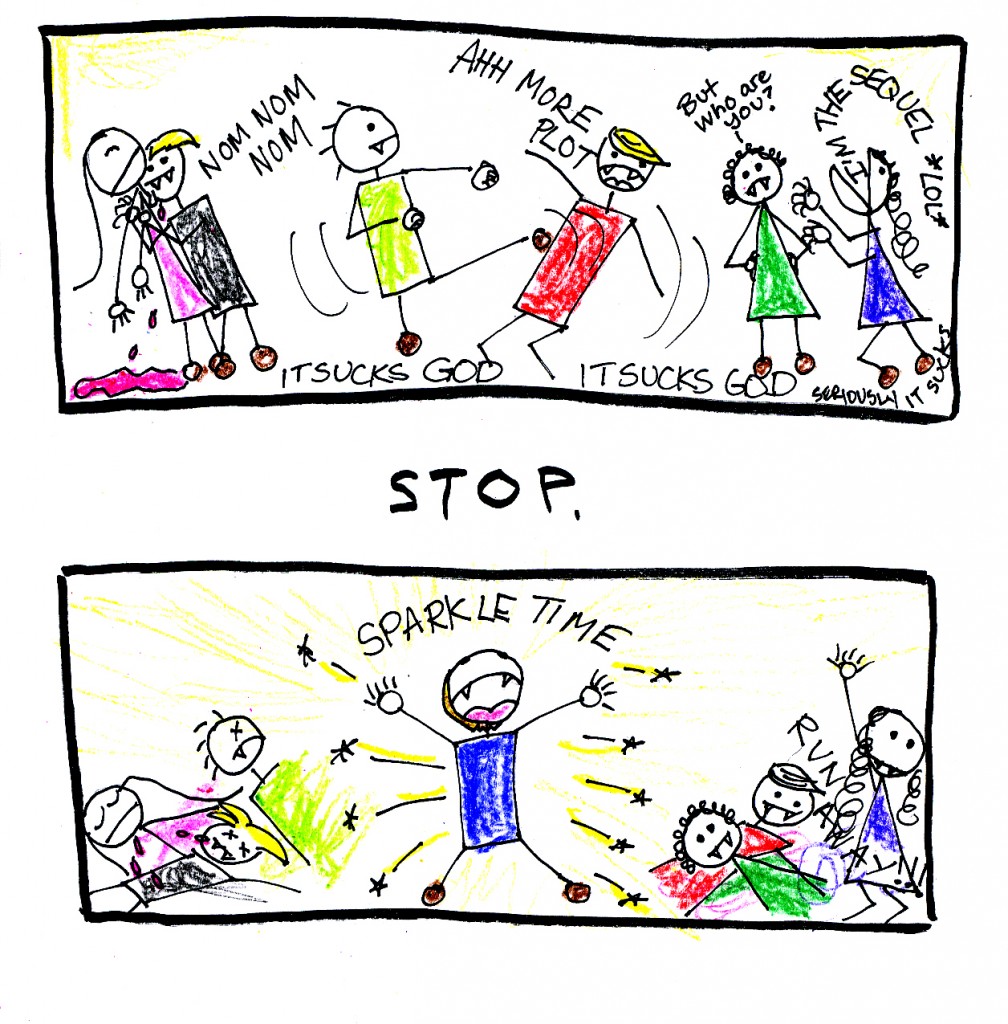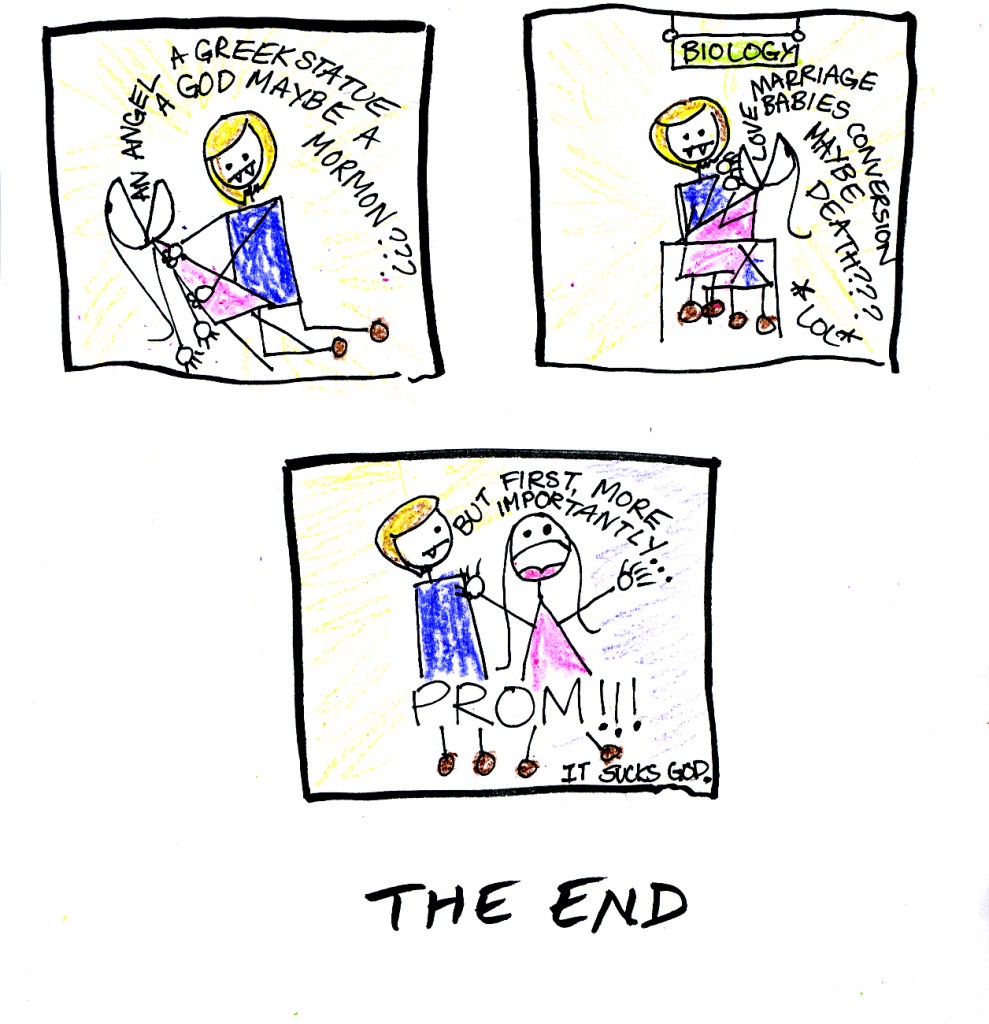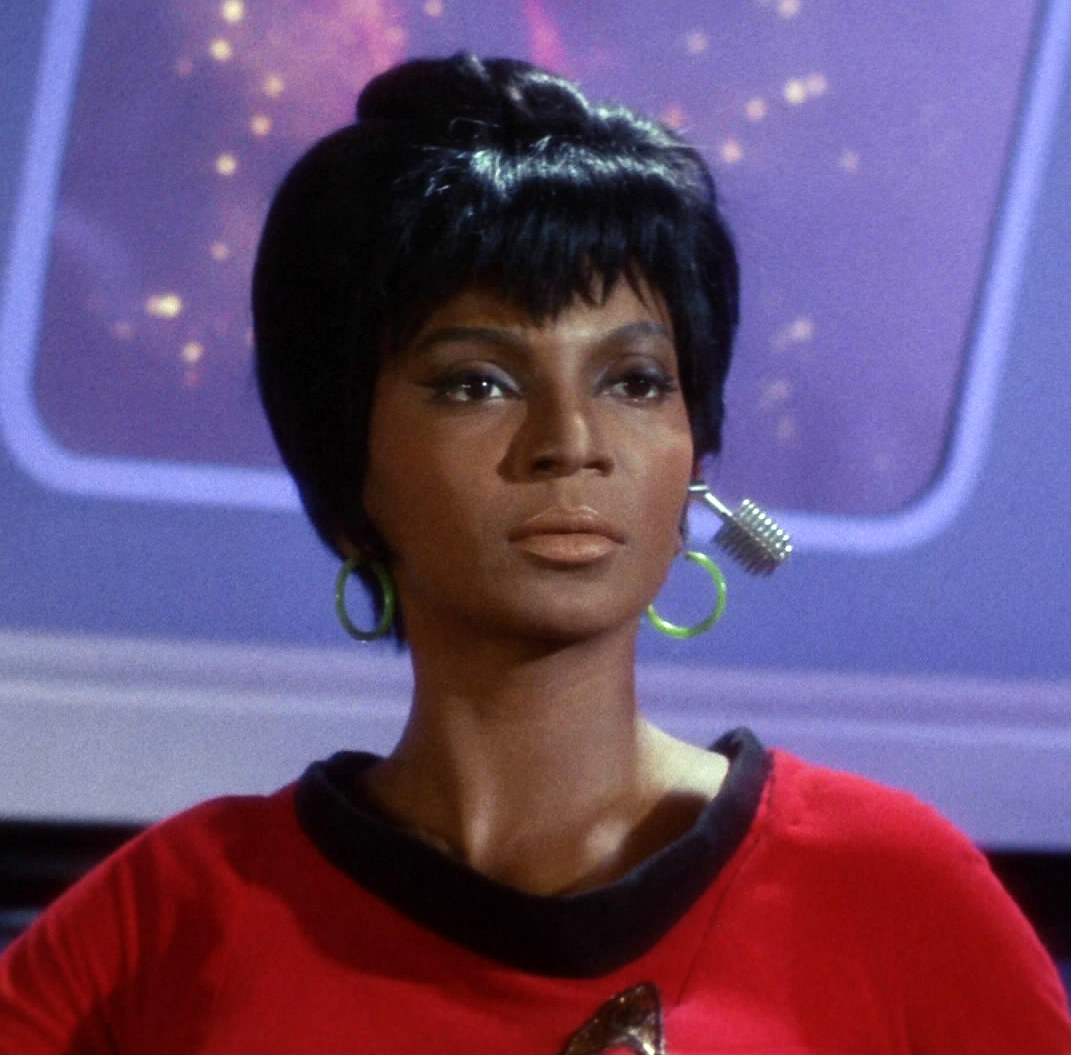 Most of us can generally agree that the treatment of women in fiction of the 1960s or earlier was by no means sublime. Consider Lieutenant Uhura, of Star Trek, The Original Series, a Communications Officer aboard the bridge of the starship Enterprise. Traipsing about the bridge in a short, short skirt, she contributed to the exploration of space by answering the phone and relaying messages. Consider Barbara Gordon of the Batman comics, a part-time librarian in a skin-tight costume, who carried most of her arsenal in a handy batpurse.
Most of us can generally agree that the treatment of women in fiction of the 1960s or earlier was by no means sublime. Consider Lieutenant Uhura, of Star Trek, The Original Series, a Communications Officer aboard the bridge of the starship Enterprise. Traipsing about the bridge in a short, short skirt, she contributed to the exploration of space by answering the phone and relaying messages. Consider Barbara Gordon of the Batman comics, a part-time librarian in a skin-tight costume, who carried most of her arsenal in a handy batpurse.
It would be a mistake to consider these narratives, however, without the context of their time period. While they might be offensive to some today, these female characters are progressive for their time in terms of what roles women play. Uhura was hugely significant, because she was an officer who had a job that involved more technology and know-how than making coffee; Barbara Gordon was one of the first female action heroes who acted on her own.
It’s relatively easy to compare social values of the sixties and of the current decade, and conclude that the position of women has significantly changed. What remains unclear is whether current treatment of women in fiction has improved proportionately. Reboots, meanwhile, provide the unique opportunity to directly compare the treatment of those values in narrative while taking into account the context of changed social environment. By taking the same story and telling it in two different time periods, one can easily juxtapose the treatment of values against said time periods.
Obviously, reboots often neglect to take advantage of these opportunities, recapitulating the social environment of the past instead of offering commentary on it, or updating it to reflect modern times. Perhaps this is one reason why the recent boom in reboots, reimaginings, sequels, etc, is seen as stale and unimaginative. In these reboots, the position of women relative to “current” society is exactly the same as it was fifty years ago.
However, there are some reboots in which the changed role of women in the narrative is not merely a recapitulation, but actually seems to be a regression. That is, not only has the treatment of women in narrative not improved proportionately to the changed role of women in society; some of these reboots would seem significantly behind their source texts even in the sixties. Christopher Nolan’s Batman reboot, J. J. Abrams’ Star Trek reboot, and to some extent Steven Moffat’s Doctor Who sequels and Sherlock Holmes re-imaging in some respects make female characters of the sixties sometimes look damn good.
Certainly, it is questionable to suit up hot girls in latex and show off their bodies as they fight crime, and certainly it is objectionable that a gal in a short skirt is a glorified secretary on a show about the future. The reboots in question remove all that pseudo-feminism by portraying ladies as love interests and lawyers, while men retain their careers of kicking ass and fighting crime with superpowers. The reboots remove those icky questions of motivation—in which girls only act because they’re daughters/mothers/lovers or because some guy tells them to—by simply removing female agency altogether. In some of them—instead of females being somewhat questionable representations of the feminist progressive movement—females barely exist at all.
Nolan’s Batman reboot is perhaps the most radical repositioning of the female in narrative relative to its source text. Although Batman’s early forms can be read as male-centric, there is no denying the place of Barbara Gordon as Batgirl in the overall Batman narrative. Plenty of iterations of Batman, however, do not include Barbara, just as several do not include Robin. Barbara’s exclusion in these iterations can be seen less as a commentary on her position in the narrative, and rather as subjection to the extreme complexity of the overall Batman story. There are enough supplemental characters that it is difficult to include them all in any single retelling.
However, Nolan’s rendition is particularly interesting due to the heavy emphasis on men, particularly the relationships between fathers and sons. Martha Wayne, Bruce Wayne’s mother, appears in several scenes, but has no lines. Her impact on Bruce (and the film) is negligible in comparison to Thomas Wayne, Bruce’s father. While the role is small, Thomas Wayne colors Batman Begins, establishing the father figure trope and demanding that it be filled in that character’s absence. Thomas is of course replaced by R’as al Ghul, and when Bruce returns to Gotham, father figures are filled by Alfred, Jim Gordon, and Lucius Fox, with varying degrees of reproof and complicity. Never is there the suggestion that any of R’as al Ghul’s daughters could possibly show up to ruin the neat pattern-making of prodigal sons and disapproving fathers, because the one significant woman in these films is Rachel Dawes.
As a feisty lawyer-type, Rachel Dawes not only suggests that women can have careers, but that they may have an active position in the plot, able to help Batman put away the criminals he catches. While some might argue that this is progressive, this statement is little different than what Superman suggested even in the 1940s. In short, Dawes is a rehash of characters such as Lois Lane, Vicky Vale, or oh, even say April O’Neil. The only new social commentary is in Dawes’ profession as a lawyer, rather than a reporter, which suggests that women can take on still more varied careers, but still, this hardly seems as progressive as Barbara Gordon insofar as the role of women in today’s society. After all, Barbara Gordon became a vigilante independent of Batman; there is no suggestion whatsoever that Dawes could possibly sustain her own narrative.
Nolan’s reboot more directly fails in regard to feminism in The Dark Knight, when Dawes dies. This is Dawes’ most significant action; it is the crux that instigates all further action. Her death causes Two-Face to emerge, and Batman to realize that his hopes of legitimate justice are inherently flawed.
The idea that a woman’s single greatest strength is self-sacrifice is a common trope in narrative. It seems to fit in nicely with the idea that a woman’s only strength lies in the help, support, and nurturing of menfolk. Giving of self is a strength many women do have, and take pleasure in actively offering; however, this is not their only possible form of action. Self-sacrifice is often portrayed as the ultimate nurturing action (see The Giving Tree) and thus the ultimate strength (see Sucker Punch); a female sacrifices all of her agency so that others may have it.
The Dark Knight, however, presents a much less active role; in The Dark Knight, it is not active self-sacrifice but rather passive death that forms the crux of all the rest of the action. In fact, it is the very passivity of the death that motivates Harvey Dent. She didn’t have a choice; it was all due to chance: the death of a perfect innocent. Her earlier fumblings towards agency are thus redeemed; any specters of latex or objectified ass-kicking are thus removed. In the context of the film, of course, it is a perfect tragedy. In the context of this male-centric universe, juxtaposed the Batman narrative of the 1960s, however, it is—well. Still a tragedy.
The complete eradication of Barbara Gordon occurs during the climax of the arc of Jim Gordon, police commissioner and traditionally, the father of Barbara Gordon. Towards the end of The Dark Knight, Two-Face threatens the person Jim “loves most.” Jim says, “Don’t hurt my family,” and Two-Face reiterates he will only harm the person Jim, “loves most.” Two-Face chooses not Jim’s wife or daughter, but Jim’s son. In spotlighting Gordon’s son—however briefly—at the expense of wife or daughter, the film narrowly avoids reference to any possible suggestion of Barbara Gordon and that whole feminist problem that she presents.
Canonically, Jim Gordon does have a son (or two), but his daughter Barbara has always been far more important to the Batman narrative. It’s true that this scene attempts to parallel Rachel Dawes and James Gordon Jr, thus demonstrating that not only females, but children also, may passively die to instigate action. However, I really admire the manly resistance to even throw fans a bone in this scene by refusing to allow Jim’s daughter—who is present—a name or any lines. Doing so makes it impossible for fans to draw parallels between Barbara Gordon and Rachel Dawes, which might have resulted in the disastrous suggestion that girls are not bright shining forces of integrity, but may be morally questionable also.
Abrams’ recent Star Trek does not manage to avoid these issues quite so neatly. The role of Uhura is significantly expanded in the reboot, as opposed to The Original Series, which gives us more time to question the treatment of female identity. Disappointingly, said expansion is due not to an expansion of Uhura’s role on the Enterprise, but rather to her new position as a love interest. Furthermore, in the source text, Captain Kirk’s various relationships with women showcases the show’s unwillingness to consummate the homoerotic overtones, and yet Kirk’s relationships never seem as serious or integral as the friendship between Kirk and Spock. By providing the apparently sustained relationship between Uhura and Spock, the reboot further paints over the problematic issue of homosexuality. The position of women aside, the reboot certainly reads as more heteronormative than The Original Series.
Uhura in The Original Series is never really treated as a love interest. In one episode she falls for a man, in several, she has somewhat flirtatious conversations with Spock. In another, Kirk kisses her, but the scene is appropriately problematized, because “aliens made them do it.” Perhaps Uhura is never treated as a love interest due to her race, or perhaps she was never deemed important enough to “deserve” a romantic relationship. However, she was a regular, important part of the crew and the show not because of any relationships she had, but because of her career, and that was significant at the time the show aired.
In some ways, it’s understandable that Uhura in the reboot is a love interest. There are very few mainstream action and adventure narratives that don’t involve the central protagonists in some sort of romantic plot—though it is interesting to note that the ones that manage to avoid it tend to center around two male protagonists, complete with homoerotic overtones (see House, BBC’s Sherlock, Supernatural, and oh, anything without girls). So maybe we can blame mainstream culture for its insistence on sexual overtones, without directly citing lack of feminist concern or insight for Uhura’s position.
After all, Uhura may not get to fight Nero, pilot a ship into a black hole, or participate in the climax of the film at all, but she does get to translate a Romulan message, which is somewhat pivotal to earlier action. We also get to see a portrayal of determination, strength, and ambition when she demands that Spock change the roster so that she can go aboard the Enterprise. The strength of this scene is somewhat negated by the fact that she uses her relationship with Spock in order to get ahead; however, it is possible that Spock did not initially place her on the Enterprise in order to protect her. Thus Uhura’s demand is an insistence on not being treated like a delicate flower.
Overall, whether the role of the reboot Uhura is an improvement in terms of feminism on original Uhura is somewhat murky, both objectively and considering the context of the time periods. Her position would be more clear if they had sacrificed her in a passive manner, as Nolan did with Rachel Dawes, and as Abrams does with Spock’s mother. The death of Amanda Grayson, Spock’s mother, motivates Spock’s actions and furthers the plot; while it is a small point, the passive death of Nero’s wife also furthers the plot. Nero, the villain, is a Romulan whose wife died when the star of Romulus went supernova; he is out to kill Spock for revenge. Thus the central antagonist and one of the central protagonists act in response to women who were not seen to act themselves.
Kirk, meanwhile, is motivated by the death of his father. His father, moreover, actively sacrificed himself to save his wife and child. We have no idea what happened to Kirk’s mother, because after giving birth to him, she is no longer important to the narrative. We also have no idea what happened to Number One, the woman who is canonically (according to The Original Series) second in command to Captain Pike. She does not exist in the reboot. One may assume that the alternate universe created by Nero’s intrusion on the timeline resulted not only in Kirk’s blue eyes, but the eradication of Number One. This deletion conveniently removes concerns we may have had in The Original Series about her lack of a first name or Pike’s somewhat dismissive treatment of her in canon. Without her existence, we need not be concerned with women in positions of leadership in Starfleet at all; there is nothing to cause us to question it or wonder.
Instead, there is Gaila: the green girl Kirk sleeps with in order to get codes to reprogram the Kobayshi Maru. Considering her skin color, she is most likely an Orion, which—according to canon—is a kind of sex slave. That she is in Starfleet at all is both progressive and problematic, similar to the original Uhura—or Tasha Yar, in Star Trek: The Next Generation.
Tasha Yar is the Chief Security Officer who spent her youth on the streets, avoiding “rape gangs.” She is the 1990s commentary on the treatment of women, perhaps a reproach to The Original Series, which rarely showed women who could fight or wear pants. Yar’s troubled past may have been an attempt to highlight her strengths as a warrior and survivor, but it fed into an unfortunate trope that women must overcome slavery, rape, or similar to be as tough as men.
Fortunately for the show, The Next Generation managed to eliminate the problem of portraying a warrior female with an icky past when the actress who played Yar demanded a larger part. The show was left with females who portrayed their strengths through more nurturing functions (counseling and doctoring)—again, an important form of action, but not the only one of which a female is capable. But because it was the main form of action for women on the show, The Next Generation in some ways seems a lot less progressive than its counterpart, The Orginal Series.
Gaila’s own history, however, is never addressed, as opposed to Tasha Yar’s. Furthermore Kirk has sex with her in order to use her, thereby bringing all those issues that never achieved their full ick-capacity with Tasha Yar right up to the fore with Gaila. The new Uhura receives a first name, which is more than the original Uhura or Number One ever got, though there is some question too as to whether those characters lacking a first name was somewhat progressive in its own way. Gaila doesn’t have a name at all in the reboot; “Gaila” comes from a deleted scene.
Many other reboots besides these seem to not only lack progressive statements in comparison to modern times, but also in comparison to their previous iterations. The new Doctor Who is not quite a reboot, since it takes previous canon into account, but it does provide the same sort of reflection on the previous series.
The central companions to the Doctor—all female—in the new Who kick a whole lot of ass, but I cannot help but notice that the first two, Rose and Martha, are both in love with the Doctor and seem to believe he can do little wrong. While there is absolutely nothing wrong with being in love, the distinct power imbalance between the Doctor and, well, everyone else of his acquaintance, suggests that these infatuations are somewhat problematic. The show, however, doesn’t problematize the power imbalance, only the fact that the Doctor apparently has feelings for Rose, but cannot be with her, and apparently doesn’t really have romantic feelings for Martha.
The next companion, Donna, is not in love with the Doctor, and seems positioned to critique his hubris and many, many questionable actions. However, by the end of her arc she trusts the Doctor without reservation, and seems behind even his morally ambiguous behavior. This, too, seems to highlight the power imbalance without asking any questions about it.
Donna’s arc ends powerfully; she essentially saves the world—but this she can only do by becoming the Doctor himself. Because even the Doctor realizes the danger there being two of him prevents, he erases Donna’s memory completely, returning her to her former life as though he had never entered it. This is particularly disturbing because Donna had very little motivation or agency before she met the Doctor; through her adventures with him, she found her strengths and gained some measure of power, even if it was only by means of the Doctor. By leaving her with no memory of her experiences, Donna once again lacks confidence, and possibly continues the existence she later herself saw as shiftless and meaningless.
The Doctor’s most recent companion also begins in a similarly male-influenced, passive manner: as a little girl, Amy Pond meets the Doctor, and she’s obsessed with him ever since. For two seasons, there is little to no reflection on the fact that Amy’s early beliefs and desires are influenced, even manipulated by a very powerful male authority; her later actions are all predicated upon the Doctor creating a strong impression on her as a child.
However, the most recent season expands the role of another female character, River Song, who—while somewhat problematic in her own right—is at last a female who at last can challenge the Doctor in terms of knowledge and power. The recent season also problematizes Amy’s early relationship with the Doctor—which, for the sake of girls prevailed upon at an early age by male authority figures, is well. Nice.
Hopefully Moffat’s next installment on BBC’s Sherlock will progress similarly. Sherlock, unlike Doctor Who or Star Trek, is not a reboot of a 1960s narrative, but a reimagining of a late nineteeth century narrative; thus it is no surprise that women do not play large or progressive roles in the stories. It’s that very lack that makes me wonder at the sudden boom in reboots, reimaginings, and retellings—after all, historical accuracy is not only a convenient, but sometimes a perfectly valid excuse for sexism.
Sherlock, however, is a modernized reinvention of Doyle’s stories. Admittedly, the space for females in the structure of the narrative itself, not just the Victorian time period, is somewhat confining; there has never been a large cast in these stories. We know characters like Moriarty, Mycroft, and Irene Adler well because so many variations on the stories exist, but canonically, they do not appear very often. Irene Adler appears only once—though we may applaud reboots for her use and reuse as an attempt to bring a strong female into the narrative. But if one remains close to canon, there are only two central heroes, John Watson and Sherlock Holmes, and sometimes a third, somewhat lesser protagonist, Inspector Lestrade.
However, there is absolutely no reason the issue could not have been addressed in a modern adaptation by merely changing the sex of one of the characters. Lestrade could have been a girl; there is no reason, canonically or thematically, that Lestrade has to be a man. One might argue that Moriarity and Mycroft must remain men, as they serve as mirrors to Sherlock, though there seems very little reason why—in a modern context—a woman can’t serve as a parallel character to a man. Lastly, there is no reason Sherlock cannot be a girl.
Sherlock Holmes is a quintessentially male character, but it is not due to sexuality, or physical strength, or other qualities that society tell us are overtly masculine. Instead, he is masculine due to his phenomenal intelligence and social ineptitude with other people. There is absolutely no evidence or rationale behind the idea that these traits are inherently masculine, and yet there are few, if any, characters in most of literary or media western canon which are as overwhelmingly intelligent and cerebrally inaccessible as Sherlock Holmes, who are also women.
The one reboot I will mention in conclusion is, of course, Battlestar Galactica, which does change the sex of one of the original characters, and reimagines other roles with females to fulfill them. The reimagined Starbuck is singular not only because she is played by a woman, but because she retains many of the “masculine” characteristics so central to the original character. She smokes, she gambles, she gets in brawls. She is not, however, merely a male character with breasts, some of her plots and concerns are considered by society feminine, and other plots and concerns could only happen to a woman.
That is not to say that the entirety of Starbuck’s arcs are shining examples of everything a female character should be in narrative. On the contrary, some of her characterization—like latex and batpurses in the sixties—is a reflection of the deficiencies of our modern times: the not yet perfectly equal role of women in today’s society. And yet, like Batgirl and the original Uhura were in the sixties, I would say the reboot Starbuck is progressive for her time. Her role is to ask the questions; we provide the answers.
I’m actually not a huge fan of Batgirl. And I really, really enjoy Nolan’s reboot of Batman, as problematic as it is. When considering these narratives, however, it’s important to look beyond the diegesis to the context of the time period, and ask questions regarding the situation of social values within the world of the story. It’s important to do so in the case of reboots and reimaginings in particular, because it is so easy to neglect context not only in favor of the diegesis, but in favor of a context that is valid only to the source text, not the reimagining. If these retellings do not themselves push boundaries, we are in danger not only of said boundaries remaining in place, but actually backsliding into the positions they so comfortably held decades ago.

